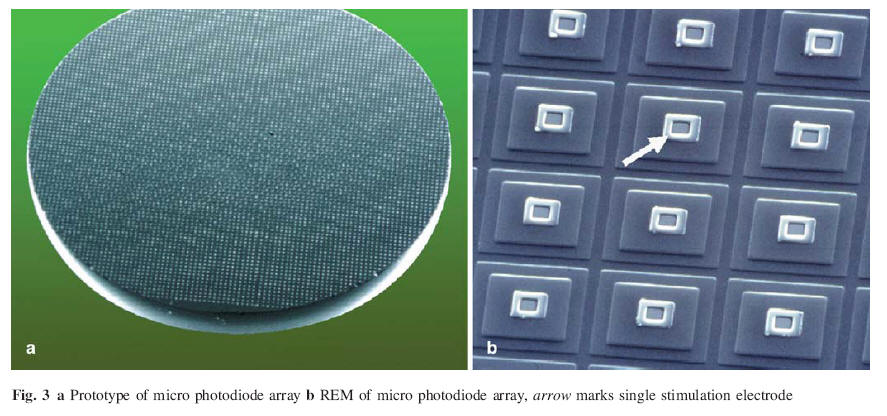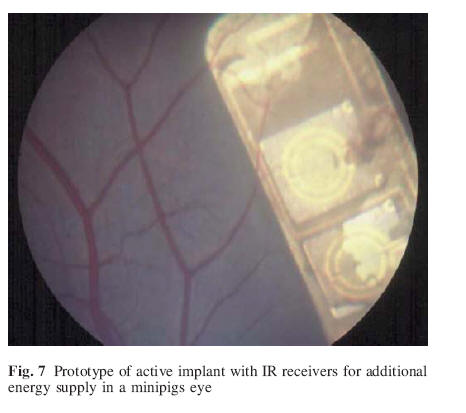 [6]
[6]ELECTRODES
A retinal implant is a 4mm x 5mm device that is composed of 16 electrodes in a 4 x 4 array. It is typically implanted where the retina and the photoreceptors are. The device transmits electrical signals to the intact neural path of the individual. The signal is then relayed to the optic nerve which carries the information to the visual processing centers of the brain. [1]
 [6]
[6]
Epiretinal Implant
The epiretinal implant acquires images from a camara positioned outside of the eye. The images are then preprocessed in a computer and modified so that the images cold be transduced to an electrical signal to stimulate the brain via the epiretinal implant. The epiretinal implant is a contact structure for reading the preprocessed visual information from the camara to the human optical system.
Subretinal Implant
A subretinal implant is a retinal prosthesis that consists of light sensitive selenium cells placed behind the retina of a blind patient [7] and this allowed the patient to perceive light. Subretinal implants consisted of thin silicon plates 2-3 mm in diameter and 50-100 microns thick and carrying several light- sensitive microphotodiodes (as shown above). The micro-electrodes of gold or titanium nitrate are arranged in arrays on thin plates. Shown below is a schematic of a subretinal implant, the subretinal implant converts light impulses into electrical currents by the microphotodiodes. The retina is stimulated with locally at the sites where the electrodes are placed.
 [6]
[6]
 [6]
[6]
 [6]
[6]
 [6]
[6]